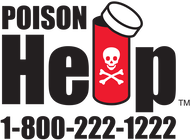|
We are strong advocates of breastfeeding and will help you succeed at it.
Studies have confirmed that Babies who are breast-fed have fewer infections (SOURCE) and allergies during the first year of life than babies who are fed formula. Anecdotal evidence as experienced pediatric physicians confirms this first-hand over the past few decades and thousands of patients. Some advantages:
Note: Babies who are exclusively breastfed should take 1mL or 400IU of Vitamin D drops. Many mothers find breast-feeding one of the most rewarding aspects of baby care.
Comments
First Exam
Baby born at Sibley or George Washington (GWU) Hospital? We will usually see him/her at the hospital within the first 24 hours. Baby born someplace other than Sibley or GWU Hospital? We would like to see you in the office within 3-4 days after discharge. We usually schedule the first office visit anywhere from 3-5 days after birth to check the baby’s weight, presence of jaundice and to assist with any feeding issues. Next Exams Please bring the Discharge Summary papers from the hospital to your first visit in the office. In the beginning, check-ups will be relatively frequent while we are following the baby’s initial growth and development. We administer important immunizations during the early months in accordance with the American Academy of Pediatrics guidelines (see schedule of immunizations* link coming soon). Also, parents usually have the most questions during this period and we're here to support you too! Other Preparation You can also prepare in advance by stocking your medicine cabinet. Hospitals Washington, D.C.
Poison Control Center
Phone: 1-800-222-1222 There are two important parts of taking your child's temperature. Knowing how to take it (click here for Is It a Fever and What to Do), and knowing what it means (click here for What Temperature is a Fever?).
Step 1: Have your child lie stomach down on your lap. Step 2: Before you insert the thermometer, apply some petroleum lubricating jelly (such as Vaseline) to the end and to the opening of the anus. Step 3: Gently insert the thermometer into the rectum about to 1 inch. Never try to force it past any resistance. Step 4: Hold your child still while the thermometer is in. Step 5: Leave the thermometer in your child’s rectum until it beeps. The following is a list of general over-the-counter medicines and supplies that can be included in a medicine cabinet:
|
AuthorThe staff of Panda Pediatrics, located in Washington, D.C. Categories
All
Archives |
|
Schedule your visit today!
|
HOURSMon: 9am-5pm
Tues: 9am-5pm Wed: 9am-5pm Thurs: 9am-5pm Fri: 9am-2pm Closed daily 12pm-1pm. |
Phone: 202-466-5350
Fax: 202-466-8555 After Hours: 703-535-1856 Email: [email protected] Billing: 1-888-969-3735, option# 1 |
ADDRESS2440 M Street NW
Suite #422 Washington, DC 20037 POLICIES |




 RSS Feed
RSS Feed

